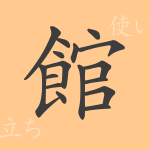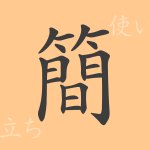From ancient times, the Kanji character “環” (Kan) has been closely related to people’s lives, embodying various meanings within culture and language. By exploring the rich history and meanings of this single character, as well as its everyday usage, we embark on a journey to deepen our understanding of our language.
The Origins of 環 (Kan)
The Kanji “環” (Kan) originated in ancient China, representing a hole pierced through jade. This form, when continued, led to the formation of the character “環” (Kan), signifying things that continue or are circular in shape. Over time, it became a Kanji with many meanings and made its way to Japan, where it took root in the Japanese language and culture.
The Meaning and Usage of 環 (Kan)
“環” (Kan) refers to its original meaning of “ring” or “circle,” while also metaphorically representing concepts such as “situation,” “scope,” and “continuity.” For example, “環境” (Kankyō) denotes the surrounding situation or conditions, and “生活環” (Seikatsu Kan) refers to the scope or flow of everyday life.
Readings, Stroke Count, and Radical of 環 (Kan)
The Kanji “環” (Kan) has multiple readings, reflecting the richness of the Japanese language.
- Readings: Its Onyomi (Sino-Japanese reading) is “Kan” , while its Kunyomi (native Japanese reading) can be “Wa” or “Tamaki”.
- Stroke Count: “環” (Kan) has 17 strokes.
- Radical: The radical of “環” (Kan) is “玉” (Tama/Gyokuhen).
Idioms, Phrases, and Proverbs Using 環 (Kan) and Their Meanings
There are numerous idioms, phrases, and proverbs that include “環” (Kan), each telling a story of the depth of the Japanese language.
- 環境保護 (Kankyō Hogo): Actions or policies aimed at protecting the natural environment and aiming for sustainable development.
- 一環として ( Ikkan-toshite): As part of a plan or project.
- 環状線 ( Kanjōsen): A circular railway or bus route in urban transportation.
Summary on 環 (Kan)
Each Kanji character is imbued with its history of formation and cultural background. “環” (Kan) is no exception, and its diverse meanings and usages tell the story of the richness of our language. From environment to circular lines, understanding how this single character connects our world allows us to perceive the deep connections through language.

























